The main goal is to be able to scroll each row's content horizontally.
I'm trying to do this with X Code 5 and using StoryBoard.
The problem seems to be simple, but after many hours of searching I got nothing except for one problem that is somewhat similar but using programatic only approachsee here.
In IB, I have the structure as shown in the design below.

- The content size of the scrollview in set to {5000, 500} set both in IB and in code
- The scrollview frame is {0,0}{320,44}
- The labels frame is set to {20,0}{500,44}
I've also provided an example project in a github repository. The example also includes a "normal" scrollview working outside of a uitableviewcell.
Please say that I overlooked something very basic.
